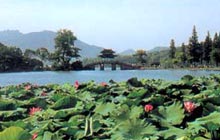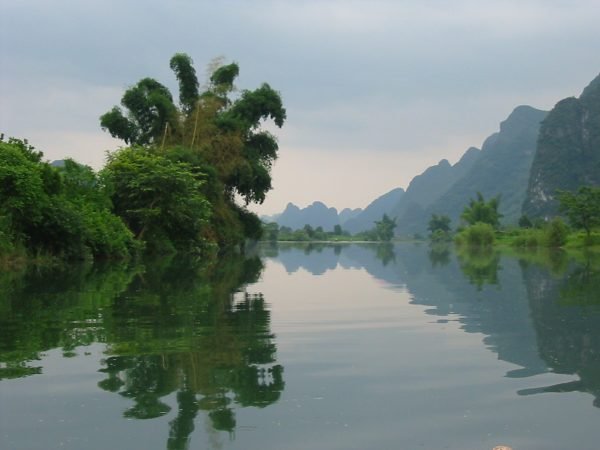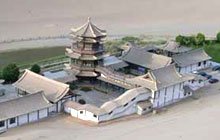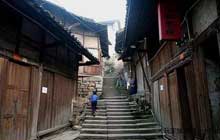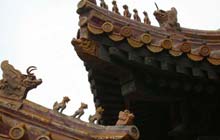The Western view:
"Green mountains surround on all sides the still waters of the lake. Pavilions and towers in hues of gold and azure rise here and there. One would say a landscape composed by a painter. Only towards the east, where there are no hills, does the land open out, and there sparkle, like fishes' scales, the bright coloured tiles of a thousand roofs."
(Jacques Gernet, Daily life in China on the Eve of the Mongol Invasion)
The Eastern view:
"In heaven there is Paradise, » Read more »
» Read more »The Nan mountains, dividing the Yangzi river basin to the north from the Xi river valley to the south, have always protected Guangxi province from unwelcome intruders. They not only shelter this tropical region from the cruelly bitter winds of the Gobi, throughout its history they’ve also shielded it from the encroachments of the Imperialist Han Empire.
From their first invasion here in the 3rd century BC until the 12th century AD, the Han Chinese considered Guangxi an exotic region inhabited by barbaric and unruly aboriginal tribes. » Read more »
» Read more »Through China's long history three geographic areas have been vital to her overall defense. The first is the Tarim Basin, marked on many Western maps as the western half of the Gobi Desert. The second is the marshy grasslands of the Ordos, located around the great loop of the Yellow River, now in Inner Mongolia. The third area is the Orkhon river valley northwest of the Ordos in Outer Mongolia. Whoever controlled any of these three areas had a strong base from which to threaten China. » Read more »
» Read more »Chengdu , in western China , is the capital of Sichuan Province (former spellings included Szechwan and Szechuan ). The province is known throughout China and the world, for its spicy food, pandas, tea drinking habits, and hot pot. The basin in which Chengdu sits is surrounded by a ring of mountains that formed a natural obstacle to traders and attackers for centuries. For many years the most accessible route into the Sichuan Basin was to brave the perilous shoals of the Yangzi River . » Read more »
» Read more »Beijing or Northern Capital was made capital of the world's largest ever, land-based empire by the Mongol conqueror, Kublai Khan, in 1271. What was then the quiet market town of Yanjing was promptly remodelled into a glorious city befitting the attention and tributes of the world.
After the Mongols were overthrown in the coup of 1368, however, the first Ming Emperor Hongwu (r. 1368-1398) relocated the capital elsewhere. His descendant, unnerved by the continuing threat of the Mongols to the North, » Read more »
» Read more »